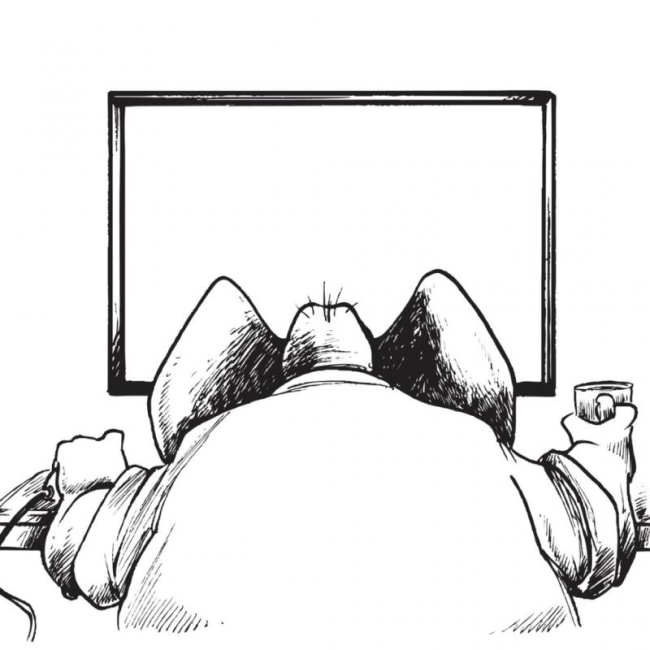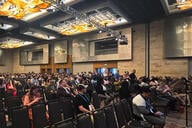You have /5 articles left.
Sign up for a free account or log in.

Istockphoto.com/Keith Bishop
The coronavirus pandemic has thrown the world of higher education into turmoil. Somehow, it was only a few weeks ago when a flurry of articles discussed the ins and outs of the transition to remote instruction.
We saw big-picture advice about transitioning courses for remote instruction, functional introductions to various remote technologies, primers on remote instruction and even calls to do a bad job of putting courses online. Other articles urged us to support students during their transition to learning in uncertain times and to recognize the disruption this shift would cause students. Some argued that this was the perfect opportunity to assess what students actually learn, while others suggested that the “panic-gogy” emerging in this unprecedented time requires critical compassion rather than meta-assessment.
Such responses to the pandemic have revealed some of the best and worst aspects of our colleges and universities. Yet in the midst of this storm, we are being driven, without pause, toward a more transactional version of higher education. While different institutions have responded variously to the challenges that have arisen, they have been in near-universal agreement on one thing: the need to implement “academic continuity.” Faculty members were implored to “keep teaching,” “pivot to remote instruction” and “transition to online course delivery.” So many faculty conversations and think pieces appearing the past few weeks have been about tools, training, models, exams, academic integrity. Mechanics.
Mechanics, of course, matter, but, mechanics alone are not sufficient to help students learn and thrive in this new reality. Such rhetoric -- continuity, instruction, delivery -- papers over learning.
While there was once some (small) hope that remote instruction would be a temporary change and that classes would be meeting in person again before the end of the semester, that hope has now faded. Colleges and universities are considering how to handle summer and fall courses, and it’s clear that the impacts of this shift to remote instruction will be much bigger and longer-lasting than they initially seemed.
This moment calls for a reconsideration of the way in which the mechanics of remote instruction serve the central purpose of education: learning.
Who We Are
We are a group of six faculty from a range of social science, humanities and STEM disciplines. We teach at various institutions: a community college, a small liberal arts college and public and private universities. Many of us advise other faculty members as well. (We’ve met occasionally in person, and often on Zoom, a tool that has undoubtedly aided us.) As part of a grant-funded project, for the past year and a half we have been rethinking the very nature of public higher education, and we’ve gone back to the most fundamental axioms and principles that underlie all of our institutional education. Our conclusion, at this point, is that higher education must be organized around student learning: not “content delivery” or transactional mechanics but meaningful and humane learning experiences.
Zoomifying
The transactional mechanics of our current state reveal a curious orientation to the way time is spent with students. Understandably, the first pressing questions addressed in the transition were: How would we fill and deliver something for the rest of the semester? Record our lectures for students to watch? Meet on Zoom at designated class times? Proctor quizzes and exams? Convert our assessment to applied projects? But we believe this was and is inadequate. Were (are) we just concerned with having substance that will allow students to earn a grade and satisfy accrediting bodies? Is the primary goal “continuity” -- trying to make the new look just like what is familiar?
The mechanics of remote instruction are not necessarily inclusive or equitable. Remote instruction requires that students have access to both capable computing technology and reliable internet service. Yet every student enrolled in college classes does not have access to these now-required tools, creating a divide that is less apparent when students can be on our campuses and use the provided internet and computers. Remotely delivered content must, but often does not, conform to the highest standards of accessibility. All students deserve the opportunity to learn, therefore, accessibility and access are primary concerns.
The business-as-usual approach might, at its worst, mean that unreflective in-person pedagogy is translated into an even worse version online. That approach doesn’t serve students, faculty members, educational institutions or society. At worst, it will produce a broader devaluation of college degrees and widening social inequality. Completing classes and graduating is not the whole picture. Students need to learn while they are in college. Learning unlocks the full benefits that have historically been signaled by a college diploma, including upward mobility, increased earnings and happiness.
But in this moment, the obstacle is the way.
Zooming Out
Like our colleagues, all of us have been trying to figure out how to conduct the remaining weeks of the semester. A huge amount of collective effort has gone into training faculty members to use teleconferencing tools, especially Zoom, which tempts us to think we can conduct business as usual. It’s offered up as our salvation.
But Zoom isn’t learning. Just turning on Zoom or posting content in the learning management system doesn’t solve our problems. These are all tools, which need to be conduits for learning. In effect, the focus on mechanics has obscured necessary conversations about how to create meaningful learning experiences for our students, where they are.
This moment allows us to play with what learning can happen in our classrooms, not just how we fill a semester with assessments and assignments. We suggest that we take the time, right now, to do just this.
From our perspective, centering our practices on student learning begs for us to:
Let Go Of …
- The syllabus as it existed before;
- “Normal/expected” order;
- Contact hours;
- Everyone having to do the same thing;
- Assignments that invite cheating;
- Control and authority;
- Assumptions about what students want;
- Suspicions about student integrity;
- “Covering the content” and “content delivery”; and
- Perceptions about students’ access to technology.
Latch On To …
- Caring for students as whole people;
- Fostering community and connections that facilitate learning;
- Working to understand each student’s context;
- Collaborating with students on their learning;
- Learning from students;
- Responding with flexibility;
- Engaging conversations about the difficulty of now;
- Challenging students to learn, not just ride out the semester;
- Avoiding isolation and collaborating with other faculty members; and
- Using colleagues as resources and sounding boards
This has meant for us reconsidering our orientations toward assessment, like de-emphasizing grading and emphasizing interaction, feedback and learning. It has also meant interacting with students via text, phone and other means we did not often use before this crisis. We’ve offered more creative and individually tailored assignments and invited students to co-create assignments and assessments related to the pandemic or students’ lives. We’ve taken advantage of multimodal tools to create podcasts, digital posters, movie trailers and audio feedback.
We’ve also been implementing regular well-being updates and encouraging students to check up on each other. We’ve gotten to know the names of our students’ pets and talked with them about their health battles, job losses, internship cancellations, visa fears and financial anxieties. We’ve talked about motivation, hope and inspiration in the context of trauma, fear and uncertainty. We’ve added poetry and breathing exercises and offered tools to address stress and trauma. We are learning to be more fully human with our students.
In conclusion, the challenge for all of us is to shift to a focused attention on facilitating meaningful learning for and with our students. We have an opportunity to think carefully about the nature of the modes of interaction that foster learning. What is gained and lost in each? What learning is possible and what learning matters? How do we craft connected learning in this new context? What are our guiding purposes and principles? Business as usual is not sufficient. Perhaps the impending expiration of Zoom subscriptions could catalyze campus- and communitywide conversations about these questions.
Our students are learners in institutions, yes, but beyond that, they are also fully embodied human beings in social networks. Although we often see them uniformly before us at a moment in a classroom, they now are in multiple time zones, with varying forms of technology, filled with anxieties about themselves and their loved ones, with concerns about money, housing, food and security.
Just like us.
This is the perfect time to dissolve the customary boundaries between teacher and student and figure out how to learn together. All participants in our classes are affected by the coronavirus. We all have much to learn from this situation and each other.
Students are whole people and need to be treated as such. Their learning is impossible to separate from this virus or from remote learning. The way forward is learning, and learning deserves our focus.




